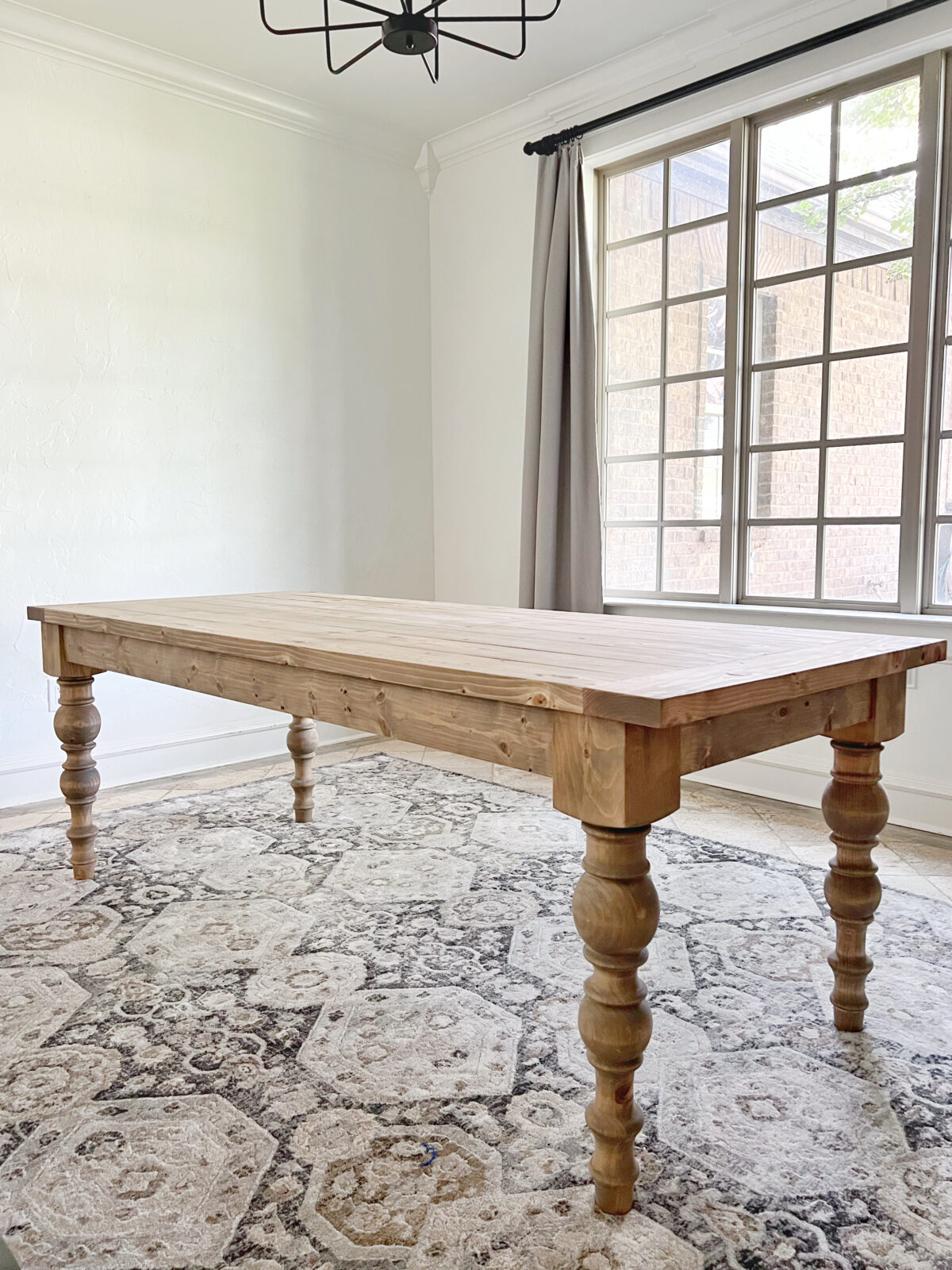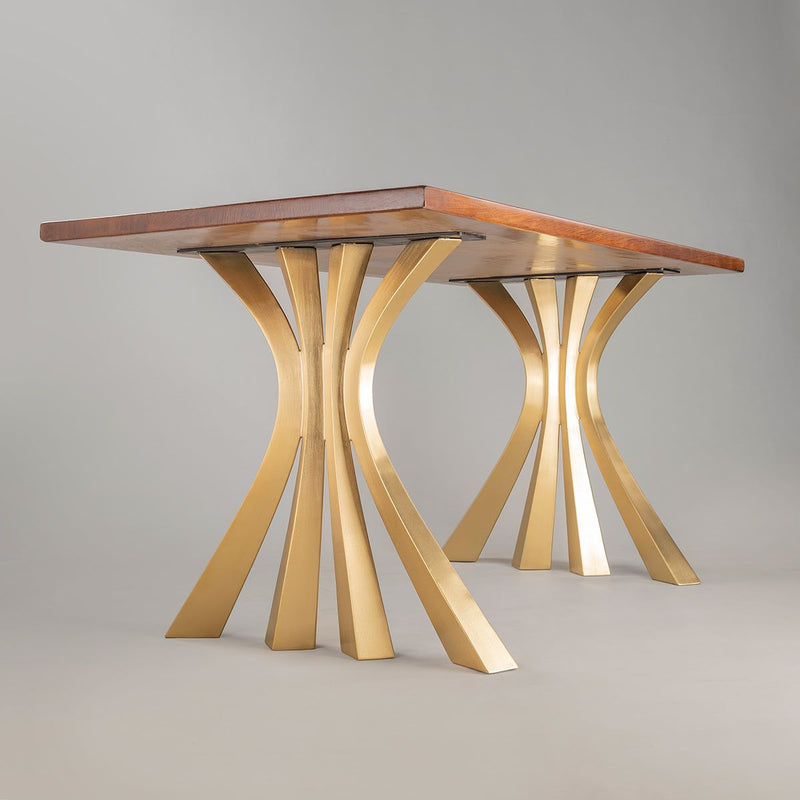Selecting the Perfect Table: What Styles Work Best for Your Home?
Picking the ideal table for your home can be a nuanced process that stabilizes aesthetics and functionality. Whether your area leans in the direction of typical beauty, modern-day minimalism, rustic charm, or industrial trendy, the selection of styles readily available can accommodate diverse preferences. Each design uses distinct advantages and challenges that can either boost or disrupt your eating location's harmony. Recognizing how various products, shapes, and dimensions interact with your existing decoration is essential. To browse these selections successfully and find a table that genuinely enhances your home, consider the adhering to aspects in detail.
Evaluating Your Area
Reviewing the measurements and layout of your dining area is a vital very first step in selecting the perfect dining table. Begin by determining the length and width of the space, representing entrances, home windows, and various other building attributes that can affect table positioning. This makes certain that your table not just fits yet additionally allows for comfy activity around it.
Take into consideration the variety of individuals you typically entertain. A table should accommodate your household's daily demands while offering enough adaptability for periodic visitors. Generally of thumb, designate at least 24 inches of table width each to ensure a comfy eating experience.
It's likewise vital to preserve suitable clearance around the table. Ideally, there need to go to least 36 inches between the table edge and wall surfaces or various other furniture, enabling very easy accessibility and motion. For rooms where chairs with arms or added storage space devices like buffets are entailed, increasing this clearance to 48 inches is a good idea.
Lights and environment play significant duties. Make sure that your dining table straightens with existing illumination fixtures or prepare for sufficient lighting remedies. This detailed spatial assessment warranties that your dining table not just fits physically yet likewise integrates with your space's overall performance and aesthetic.
Popular Table Styles

Typical table usually include elaborate details, curved legs, and rich timber coatings, stimulating a sense of ageless beauty. They are perfect for homes with classic style or those aiming to include a touch of class to their dining area.
Modern eating tables focus on simplicity and clean lines, often including products like glass and metal. These tables are ideal for modern areas, offering a sleek and minimalist appearance that enhances minimal design philosophies.
Rustic eating tables, on the other hand, emphasize all-natural materials and a handmade look - dining room table legs. They frequently include recovered wood and a troubled surface, creating a cozy and inviting ambience. These tables work well in farmhouse-style homes or those looking for a comfortable, natural feeling
Industrial dining tables integrate basic materials such as steel and wood, usually showcasing a practical aesthetic. This style is well-suited for lofts or city areas, including a touch of tough beauty and toughness to the dining experience.
Each design offers unique benefits, making it vital to pick one that aligns with your home's general layout and your personal choices.
Material Options
When picking a dining table, the choice of product plays a vital duty in figuring out both the table's aesthetic appeals and performance. Timber, steel, glass, and composite materials each deal unique benefits and obstacles, making it vital to straighten the material with your home's design and way of living needs.
Wood published here is an ageless and functional option, offered in ranges such as oak, walnut, and mahogany. Recognized for its resilience and warmth, timber enhances both traditional and contemporary interiors. Nevertheless, it calls for normal upkeep to stop scratches and warping.
Metal tables, typically crafted from stainless-steel, light weight aluminum, or functioned iron, are commended for their modern appeal and robustness. They are particularly suited for industrial or minimalist settings but can be prone to dents and may really feel cool to the touch.
Glass eating tables bring an air of elegance and visibility, perfect for smaller sized rooms as they develop an impression of even more space. While simple to clean, glass can be vulnerable to smudges and requires my sources careful handling to stay clear of chips and splits.
Composite products, such as MDF and plywood, offer affordable and adjustable services, though they may do not have the long life of all-natural materials. Selecting the right product guarantees your dining table is both a functional asset and an aesthetic pleasure.
Sizes And Shape Factors To Consider
After figuring out the suitable product for your dining table, the following factor to consider is choosing the best form and dimension to match your room. Alternatively, round tables cultivate a feeling of affection and are exceptional for smaller sized dining locations, encouraging conversation by removing corners and making every person feel similarly consisted of.
As a rule of thumb, assign at least 24 inches of table width per person to guarantee comfortable dining. Additionally, think about the table's clearance area: there must be at the very least 36 inches between the table edge and the walls or other furnishings. Expanding tables supply adaptability if you regularly organize bigger events, offering additional seating when required without inhabiting additional area daily.
Matching Your Design
Choosing an eating table that balances with your existing decor is essential in developing a cohesive and welcoming space. A smooth, minimal table with clean lines is perfect for a contemporary home, while a vintage, ornate table matches a much more traditional setup.
Color and product check this are similarly substantial. If your design includes warm tones and all-natural products, consider a wood table to boost the organic feel. On the other hand, a glass or steel table may be a lot more ideal in an area controlled by cool colors and commercial components. Pay attention to the finish, as it must mirror various other furnishings and fixtures to maintain harmony.
A rough-hewn, recovered wood table can include personality to a rustic space, while a polished marble surface can boost an extravagant eating area. A well-matched eating table not just improves visual allure however also improves the total dining experience.

Verdict
Choosing the optimal dining table requires cautious factor to consider of room, design, materials, form, and dimension. Typical tables complement traditional interiors with rich wood finishes, while modern tables suit modern setups via glass and steel.